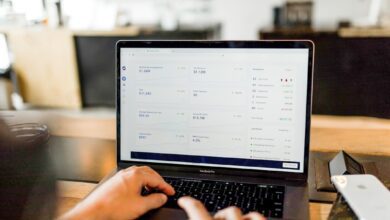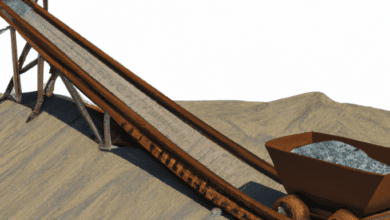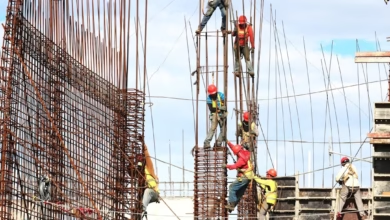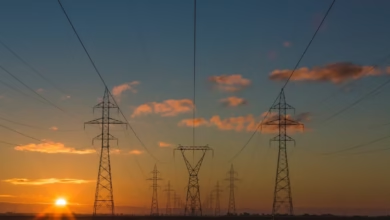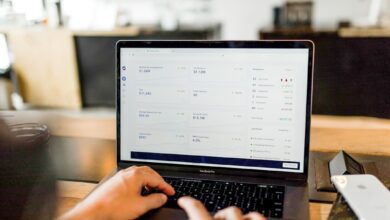Metals in Motion: Exploring Industrial Demand, Investment Trends, and Economic Signals
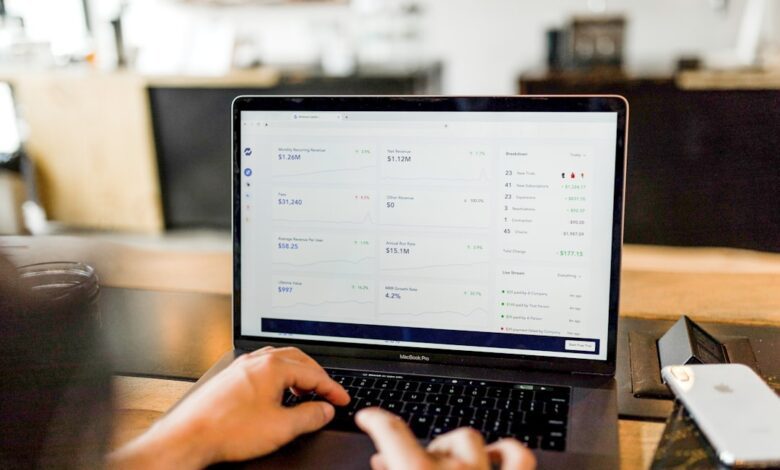
In an increasingly interconnected global economy, the dynamics of metal markets play a critical role in shaping both industrial growth and investment strategies. As industries evolve and sustainability takes center stage, the demand for various metals—ranging from silver and copper to rare earth elements—becomes a key indicator of economic health and technological advancement. This article delves into the multifaceted role of metals, exploring how silver serves dual purposes in both industrial applications and as an investment asset. We will examine how copper prices reflect broader economic trends, the growing importance of rare earth metals in green energy technologies, and the ongoing debate surrounding the investment potential of platinum versus palladium. Furthermore, we will discuss how metals can enhance investment portfolios, the effects of inflation on precious and industrial metal prices, the future of aluminum in sustainable practices, and the influence of mining regulations on market fluctuations. Join us as we navigate the intricate landscape of metal markets and uncover the vital connections between these elements and the future of our economy.
- 1. **Navigating the Metal Markets: Industrial Versus Investment Dynamics**
- 2. **Economic Indicators: How Copper Prices Signal Global Trends**
1. **Navigating the Metal Markets: Industrial Versus Investment Dynamics**
The metal markets present a complex landscape influenced by both industrial demand and investment dynamics. Understanding the interplay between these two aspects is crucial for stakeholders ranging from investors to manufacturers.
On the industrial side, metals like copper, aluminum, and nickel are essential for a variety of applications, including construction, transportation, and electronics. Their prices often reflect global economic health, as increased demand in these sectors typically signals economic growth. For instance, a surge in infrastructure projects in emerging markets can drive up copper prices, while advancements in automotive manufacturing can bolster nickel demand for electric vehicle batteries.
Conversely, the investment side of the metal markets is driven by factors such as geopolitical stability, currency fluctuations, and inflation. Precious metals like gold and silver are often viewed as safe-haven assets during times of economic uncertainty, leading to price increases as investors seek to hedge against market volatility. In contrast, industrial metals may face downward pressure if economic indicators suggest a slowdown, even if their underlying demand remains strong.
Moreover, the growing interest in sustainable and green technologies is reshaping demand patterns, particularly for metals like lithium and cobalt, which are critical for battery production. This shift highlights a divergence within the metal markets, as investors increasingly focus on the potential for long-term appreciation in metals linked to renewable energy technologies.
Ultimately, navigating the metal markets requires a nuanced understanding of both industrial demand and investment motivations. Investors must consider economic indicators and market trends while also taking into account how advancements in technology and regulatory changes can influence the landscape. This dual perspective can help in making informed decisions, whether one is investing in precious metals for safety or in industrial metals for growth opportunities.
Silver plays a dual role in both industrial applications and investment markets, making it a unique asset in the commodities landscape. In industrial settings, silver is prized for its excellent conductivity, antimicrobial properties, and reflective qualities. It is widely used in electronics, solar panels, batteries, and medical devices. As industries increasingly adopt advanced technologies, the demand for silver is expected to grow, particularly in renewable energy sectors where its conductive properties are essential.
In the investment arena, silver is often viewed as a safe-haven asset, similar to gold. Investors typically turn to silver during periods of economic uncertainty or inflation, as it is perceived to hold intrinsic value. Its lower price point compared to gold makes it an accessible option for a broader range of investors. Silver is also considered a hedge against currency devaluation, further enhancing its appeal in times of financial instability.
The dynamic between copper prices and global economic health provides additional context for understanding metal markets. Copper is often referred to as a bellwether for the economy due to its widespread use in construction and manufacturing. Rising copper prices can signal economic expansion, while declining prices may indicate a slowdown. Investors often monitor copper as an indicator of overall market sentiment and future growth prospects.
The increasing emphasis on green energy technologies is significantly impacting the demand for rare earth metals. These metals are critical in the production of magnets for wind turbines, batteries for electric vehicles, and various high-tech applications. As the world shifts towards more sustainable energy solutions, the demand for rare earth elements is expected to rise, potentially leading to supply constraints and increased prices.
When considering platinum versus palladium as investment options, it is essential to analyze their respective market dynamics. Platinum, historically more expensive than palladium, has seen fluctuating demand due to its use in catalytic converters and jewelry. However, palladium has surged in popularity due to stricter emissions regulations and its effectiveness in gasoline-powered vehicles. Investors must weigh these factors and monitor market trends to determine which metal aligns better with their investment strategy.
Investing in metals can serve as an effective means of diversifying an investment portfolio. Precious and industrial metals often exhibit low correlation with traditional asset classes like stocks and bonds, providing a buffer against market volatility. By incorporating metals into their portfolios, investors can potentially enhance returns while mitigating risk.
Inflation significantly impacts the prices of both precious and industrial metals. As the purchasing power of currency declines, investors typically flock to tangible assets like metals, driving up their prices. Additionally, rising production costs due to inflation can lead to higher prices for industrial metals, further influencing market dynamics.
Looking ahead, aluminum is poised to play a crucial role in a sustainable economy. Its lightweight properties make it an ideal material for energy-efficient vehicles, packaging, and construction. The ongoing transition towards sustainability is likely to bolster aluminum demand, especially as industries seek to reduce carbon footprints and improve energy efficiency.
Finally, mining regulations can have a profound effect on metal prices. Stricter regulations may lead to increased operational costs and reduced production, which can constrain supply and drive prices higher. Conversely, deregulation can promote investment and expansion in mining activities, potentially stabilizing or lowering prices. Investors need to stay informed about regulatory changes in key mining regions to better anticipate their potential impact on metal markets.
2. **Economic Indicators: How Copper Prices Signal Global Trends**
Copper prices are often viewed as a barometer for global economic health due to the metal's extensive use in various industries, particularly construction, electronics, and manufacturing. As a highly conductive metal, copper is crucial for electrical wiring, plumbing, and infrastructure development. When economic activity is robust, demand for copper typically rises, leading to higher prices. Conversely, during economic downturns, demand diminishes, resulting in falling prices.
Several key economic indicators correlate closely with copper prices. For example, construction spending is a significant driver, as increased building projects lead to higher copper consumption. Additionally, manufacturing output and industrial production indices provide insights into overall economic performance; a surge in these metrics usually signals increased copper demand.
Moreover, copper prices are sensitive to global trade dynamics, particularly in major economies like China, which is the largest consumer of copper. Changes in China's manufacturing activity, reflected in indices such as the Purchasing Managers' Index (PMI), can significantly influence copper demand and, by extension, its price.
In summary, fluctuations in copper prices serve as an indicator of broader economic trends, reflecting shifts in industrial demand, construction activity, and global trade conditions. Investors and analysts closely monitor these price movements, using them to gauge the health of the global economy and make informed decisions in both commodity markets and broader investment portfolios.
In conclusion, the intricate dynamics of metal markets reveal the multifaceted roles that various metals play in both industrial applications and investment strategies. As we have explored, silver serves as a critical component in technological advancements while also acting as a hedge against inflation in investment portfolios. Similarly, copper prices not only reflect the health of the global economy but also serve as a barometer for industrial demand and recovery.
The rise of green energy technologies has significantly heightened the demand for rare earth metals, emphasizing the importance of sustainable practices in mining and production. In the debate of platinum versus palladium, investors must weigh the unique characteristics and market trends of each metal to make informed decisions about their portfolios.
Moreover, the role of metals in diversifying investments cannot be overstated, especially in times of economic uncertainty. Inflation continues to exert pressure on the prices of both precious and industrial metals, highlighting the need for strategic investment approaches. Looking ahead, aluminum is poised to play a vital role in a sustainable economy, driven by innovations and regulatory frameworks that support environmentally friendly practices.
As we navigate these complex market landscapes, understanding the interplay between mining regulations and metal prices will be crucial for investors and industry stakeholders alike. The ongoing evolution of these sectors underscores the importance of staying informed and adaptable in a rapidly changing economic environment.

